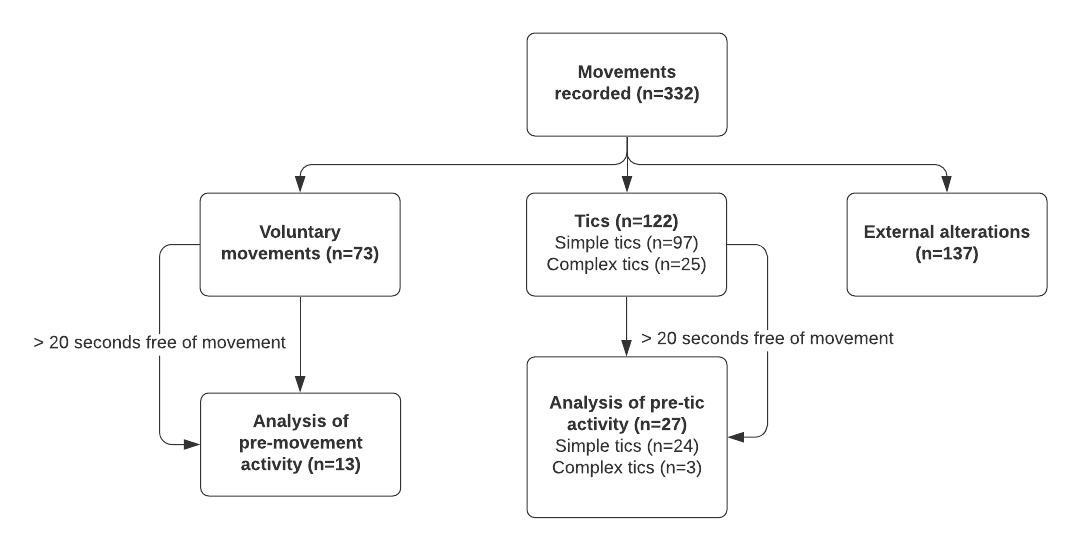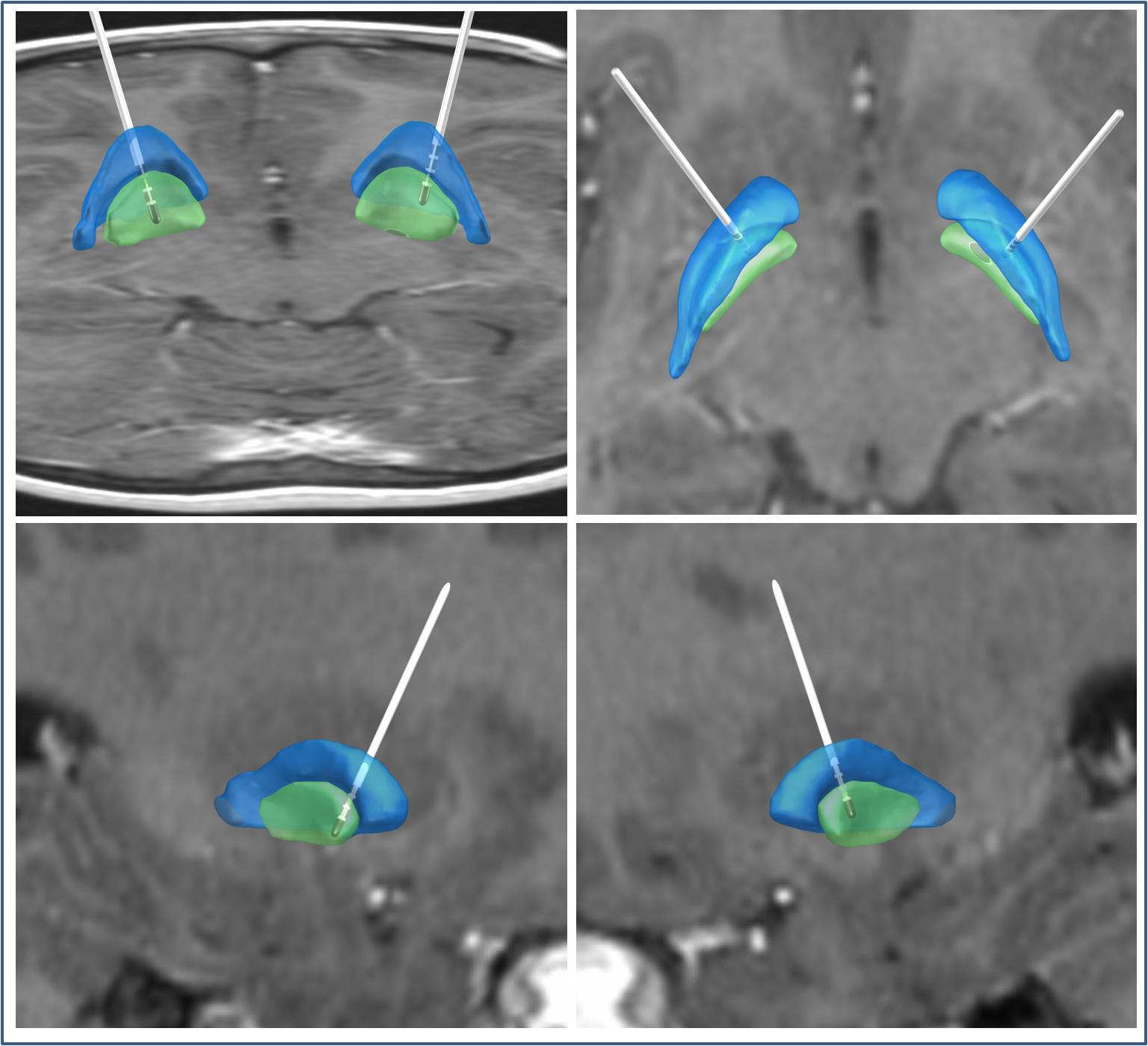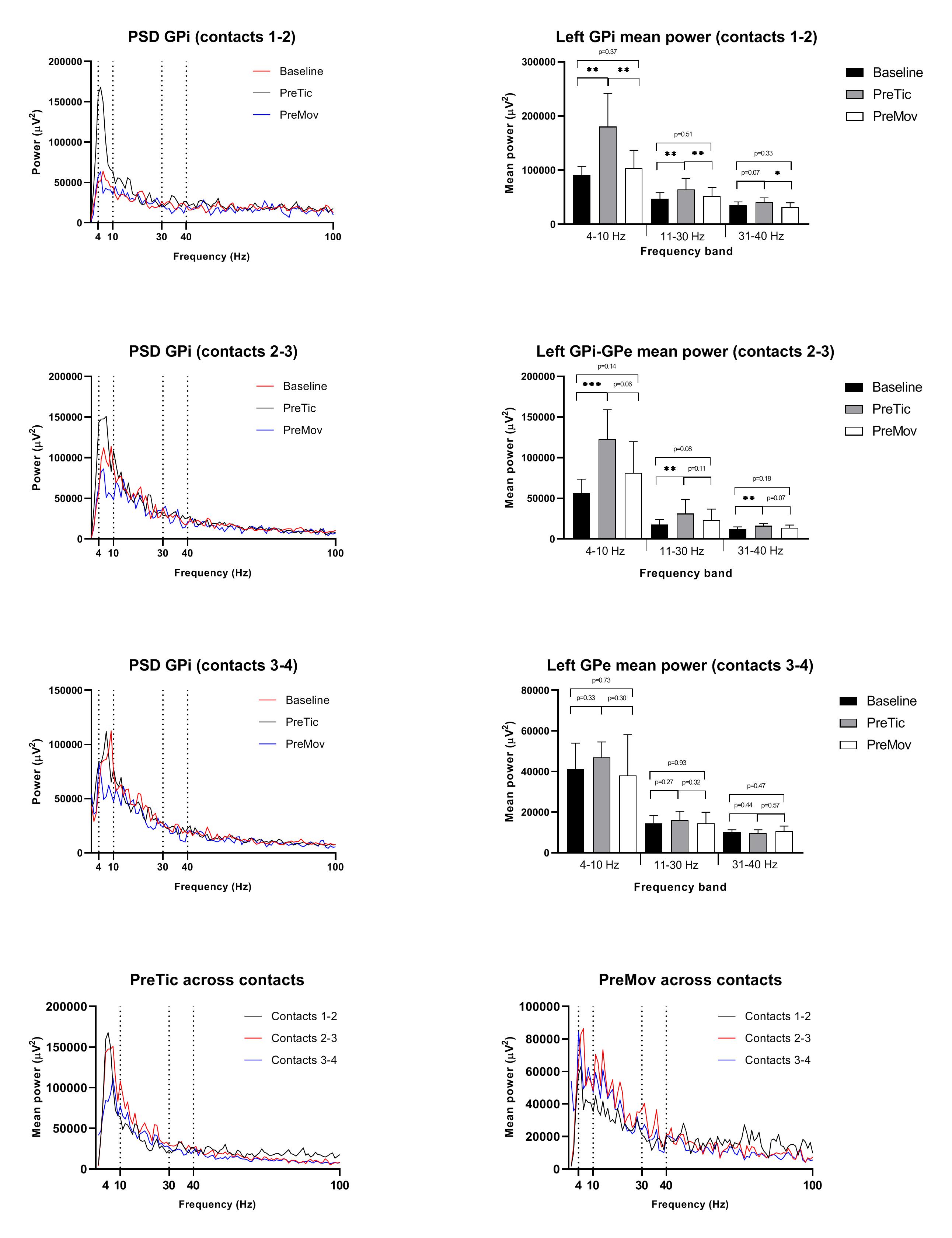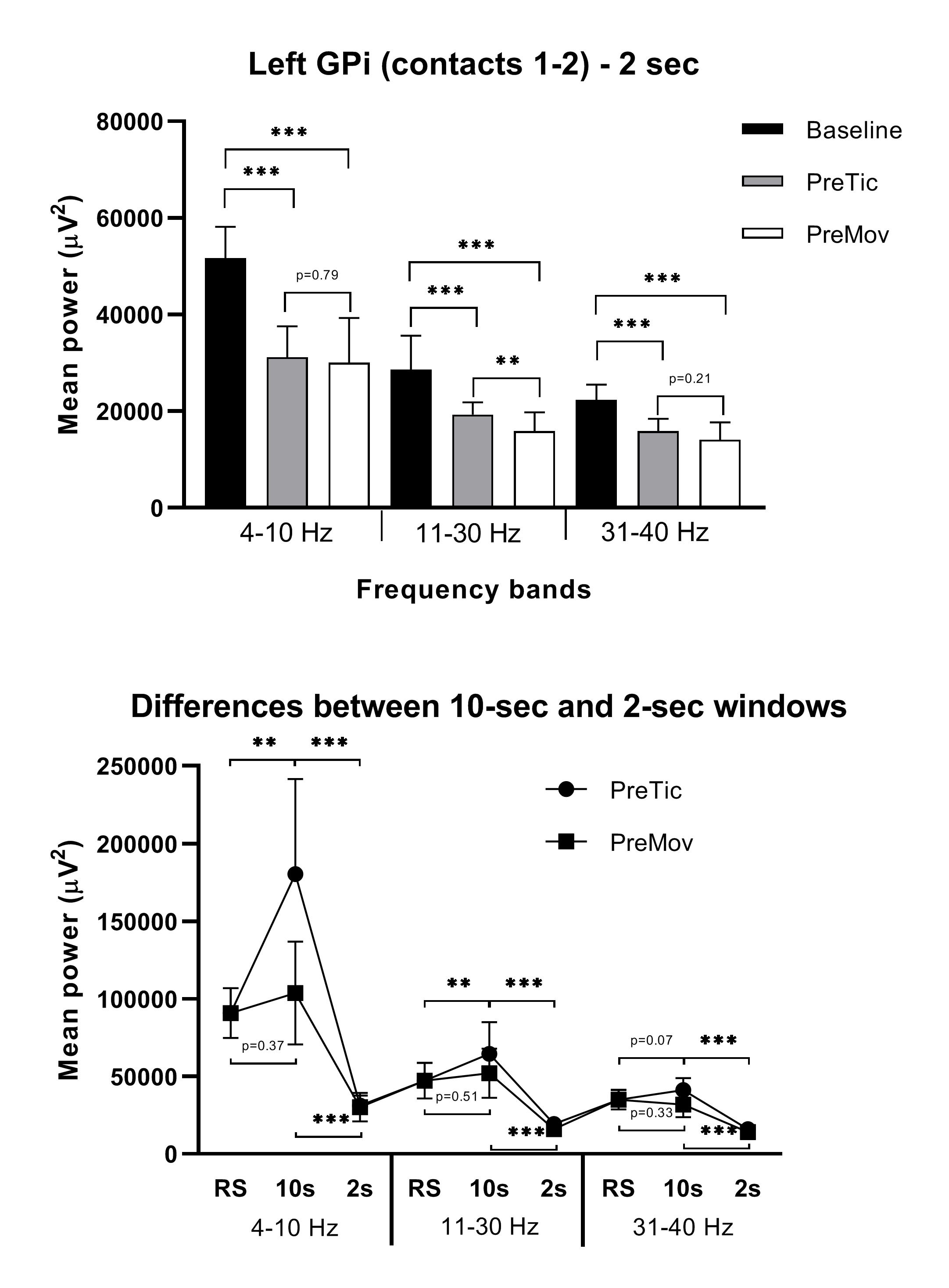Category: Tics/Stereotypies
Objective: To analyze the GPi local field potentials (LFP) in a a GTS patient prior to tic and prior to voluntary movements.
Background: Tics are involuntary, repetitive movements that resemble voluntary actions and are usually preceded by an urge to perform that movement. A recent study showed that the urge builds up in the 10 seconds prior to tic. Basal ganglia LFP analysis have correlated tic severity with low-frequency oscillatory activity, which might help differentiate tics from voluntary movements. However, to the best of our knowledge, there are no studies aiming to analyze the physiology of pre-tic activity in GPi.
Method: A 17-year old female, with GTS underwent bilateral anteroventral limbic GPi-DBS surgery due to intractable tics. GPi-LFPs, accelerometric analysis of movements and video were simultaneously recorded and registered 24 hours post-surgery. Movements recorded on video were rated by two independent movement disorders specialists. 10-second segments which preceded both tics and voluntary movements were selected, and power spectral density (PSD) estimations were calculated and compared across conditions: resting state, pre-tic and pre-voluntary movements. Mean power across selected frequency bands (4-10 Hz, 11-30 Hz and 31-40 Hz) was calculated and compared.
Results: LFPs from the limbic portion of the GPi showed a robust 4-10 Hz peak in pre-tic activity during the 10-seconds prior to tic onset. Mean power in this band during pre-tic activity was almost double than during resting state (p=0.003) and pre-voluntary movement (p=0.013). In addition, pre-tic activity presented a slight increase in the beta band (11-30 Hz) as compared to resting state (p=0.005) and to pre-movement activity (p=0.019). These differences decrease, as the distance from the limbic anteroventral portion of the GPi increases. Low-frequency peaks are not present prior to voluntary movement (p=0.37), and show a considerable dampening in the 2-seconds prior to move/tic, with no considerable difference between them (p=0.79).
Conclusion: We have shown a robust 4-10 Hz peak, which seems associated with the urge-to-tic time frame, and a decrease in motor processing prior to tic execution. This pattern is maximal in the limbic portion of the GPi. These findings might help to develop future tic inhibition closed-loop stimulation protocols.
To cite this abstract in AMA style:
M. Wilken, D. Cerquetti, M. Rossi, J. Obeso, M. Merello. Low Frequency Oscillations at Limbic GPi during pre-tic activity seems associated with premonitory urges in Tourette Syndrome [abstract]. Mov Disord. 2021; 36 (suppl 1). https://www.mdsabstracts.org/abstract/low-frequency-oscillations-at-limbic-gpi-during-pre-tic-activity-seems-associated-with-premonitory-urges-in-tourette-syndrome/. Accessed January 4, 2026.« Back to MDS Virtual Congress 2021
MDS Abstracts - https://www.mdsabstracts.org/abstract/low-frequency-oscillations-at-limbic-gpi-during-pre-tic-activity-seems-associated-with-premonitory-urges-in-tourette-syndrome/




